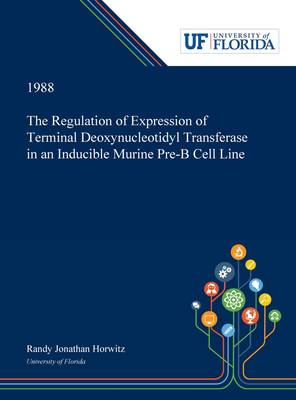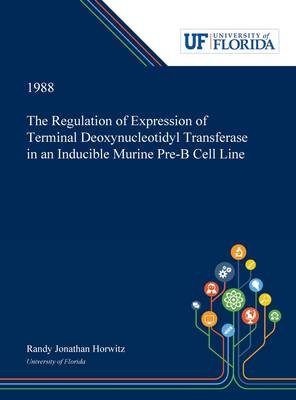
En raison d'une grêve chez bpost, votre commande pourrait être retardée. Vous avez besoin d’un livre rapidement ? Nos magasins vous accueillent à bras ouverts !
- Retrait gratuit dans votre magasin Club
- 7.000.000 titres dans notre catalogue
- Payer en toute sécurité
- Toujours un magasin près de chez vous
En raison de la grêve chez bpost, votre commande pourrait être retardée. Vous avez besoin d’un livre rapidement ? Nos magasins vous accueillent à bras ouverts !
- Retrait gratuit dans votre magasin Club
- 7.000.0000 titres dans notre catalogue
- Payer en toute sécurité
- Toujours un magasin près de chez vous
The Regulation of Expression of Terminal Deoxynucleotidyl Transferase in an Inducible Murine Pre-B Cell Line
Randy Horwitz
Livre relié | Anglais
126,45 €
+ 252 points
Format
Description
Abstract: The purpose of this study was to understand the control of synthesis of Tdt at a molecular level, using a murine pre B-cell line inducible for the enzyme. FLEl-4, an Abelson virus transformed fetal liver cell line, when treated with dibutyryl cAMP and caffeine (or other phosphodiesterase inhibitors), shows a three- to tenfold induction of Tdt, as measured by immunoprecipitation of pulse labelled enzyme, activity assays, and steady-state northern blot. The study also revealed Tdt expression (mRNA induction) by a group of agents which inhibit DNA synthesis by various mechanisms. This finding implies that Tdt expression is unlinked to clonal proliferation of pre-B cells, and suggests a multistage model for B-cell differentiation and the generation of immunoglobulin somatic variation. At a molecular level, the agents that induce Tdt were also shown to increase intracellular cAMP levels shortly before Tdt transcription. Finally, an analysis of histone phosphorylation patterns in induced cells reveal a marked enhancement of histone HI phosphorylation, a finding which may be related to the induction event. Dissertation Discovery Company and the University of Florida are dedicated to making scholarly works more discoverable and accessible throughout the world. This dissertation, "The Regulation of Expression of Terminal Deoxynucleotidyl Transferase in an Inducible Murine Pre-B Cell Line" by Randy Jonathan Horwitz, was obtained from the University of Florida and is being sold with permission from the author. A free digital copy of this work may also be found in the university's institutional repository, the IR@UF. The content of this dissertation has not been altered in any way. We have altered the formatting in order to facilitate the ease of printing and reading of the dissertation.
Spécifications
Parties prenantes
- Auteur(s) :
- Editeur:
Contenu
- Nombre de pages :
- 226
- Langue:
- Anglais
Caractéristiques
- EAN:
- 9780530018591
- Date de parution :
- 08-12-19
- Format:
- Livre relié
- Format numérique:
- Genaaid
- Dimensions :
- 216 mm x 279 mm
- Poids :
- 816 g

Les avis
Nous publions uniquement les avis qui respectent les conditions requises. Consultez nos conditions pour les avis.






